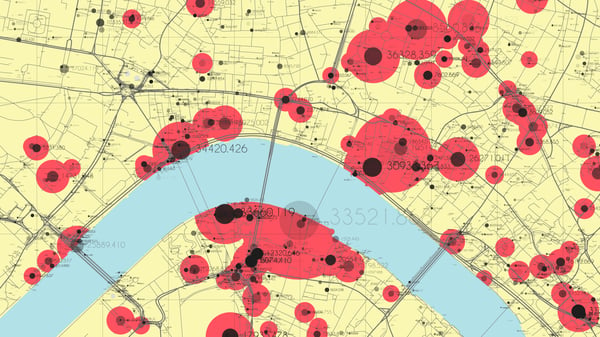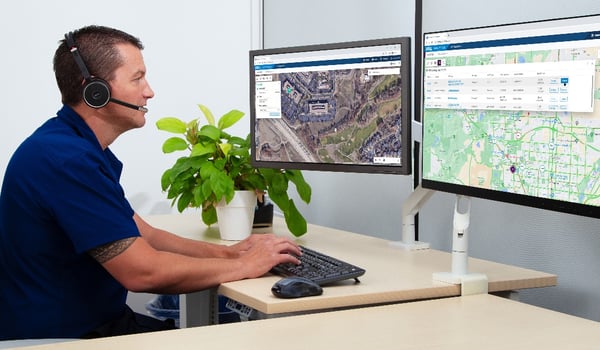4 Must-have Data Points for Dispatch-Billing Alignment and Maximum Reimbursement
The Road Safety Experience: Medic Ambulance is Changing their Culture One Step at a Time
What led Medic Ambulance to implement a driver modification tool? We knew our drivers were at risk, and we knew we couldn’t afford to live in blissful ignorance forever
Was this information valuable?

What led Medic Ambulance to implement a driver modification tool? We knew our drivers were at risk, and we knew we couldn’t afford to live in blissful ignorance forever. Here’s how we changed our culture of safety one step at a time.
Working Against the Odds
How did we know our drivers were at risk? Per the National Highway Traffic Safety Administration (NHTSA), injury resulting from motor vehicle collisions is the number one leading cause of death for U.S. citizens age 1-34. It just so happens, this age group matches our workforce in EMS. EMS providers are also at greater risk of death on the job than our police and firefighter counterparts with 74 percent of EMS fatalities being transportation related. Fatality rate for EMS personnel is more than twice the national average.
These statistics paint a perfect storm of a younger workforce: they’re affected by the number one killer outside of work AND the number one killer at work (inside the ambulance). These are two two matrices you don’t want to merge.
What Was Medic’s Catalyst for Change?
Prior to adopting a driver modification tool, Medic Ambulance did measure certain areas to determine how we were doing as a business. These included:
- Review all accidents (whether major or minor)
- Address vehicle failure rate
- Complaints from citizens
- Visual inspections
- Ride along
- Unusual occurrences
- Crew/employee complaints
- AVL system
We didn’t have a traditional “A-ha” moment that led us to realize we needed to be doing more. Everything was really good, but as a paramedic for more than 10 years and an EMT for five years before that, I knew that when you don’t have eyes on target, you really just don’t know what’s truly going on. We were blissfully ignorant. During ZOLL SUMMIT, we heard a real-life example from a company similar to our own, it made a lot of sense to us even though we hadn’t had any catastrophic events.
We saw how Road Safety changed how their employees drove. We went back after SUMMIT and really looked at Road Safety and what it could do for us. We didn’t make the decision based on return on investment (ROI), we made it solely on the need to know what we didn’t know. And asked, what can we really do to make an impact?
Numbers Tell Medic’s Success Story
To give you a little background on Medic Ambulance, we are a family-owned business in the South San Francisco Bay area. We have about 220 employees and operate about 65 ambulances.
We chose Road Safety because we liked the driver modification training aspect. We loved that the black box made audible sounds for the employees as they are driving. We chose to implement Road Safety in three phases over a 24-month period. You don’t have to implement the system in phases, but we wanted to see the raw data so we could also see what our employees were doing and benchmark any progress. Here’s a quick breakdown of the phases:
- Phase 1: Pure install of the system and collection of data
- Phase 2: Teach employees about safety culture, help them learn the system, and begin driving within the sounds and audible alarms
- Phase 3: Reward employees for exemplary driving records backed by Road Safety data of them on the road
And here’s a quick breakdown of the phases by the numbers:

As you can see, we saw a drastic reduction in violations and increased driver performance overall. This was a remarkable improvement for us. Over the next six months, we continued to see our numbers go down ending with 193 force counts, two high force counts, 28 over speeds, five high over speeds, 11 seatbelt counts, 23 unsafe reverses and an ABC Miles of 262.027.
Even though ROI wasn’t a motivator for us to go with Road Safety, we saw tremendous savings. See the following numbers for total real savings:
- Mileage Increase: $151,543.20
- Insurance Premium: $11,250 (most insurance companies give a one-year savings)
- Fleet Savings: $108.000
- 30-Month Real ROI: $270,793.20
We also made major gains in accident avoidance. We typically average five accidents per year with the average claim around $8,500 per year. During the last 19 months we had four intersection accidents while driving Code 3 with damages totaling more than $225,000. However, we were found not at fault for all four accidents, which was validated through Road Safety. And we’ve had zero at fault accidents since we started Phase 3.
Related Posts
How EMS Agencies Can Reframe Need and Refocus Resources With Geospatial Analytics
How To Minimize Radio Chatter and Reduce Guesswork With Smarter Dispatch Resource Management
ZOLL Pulse Blog
Subscribe to our blog and receive quality content that makes your job as an EMS & fire, hospital, or AR professional easier.
ZOLL Pulse Blog
Subscribe to our blog and receive quality content that makes your job as an EMS, fire, hospital, or AR professional easier.





